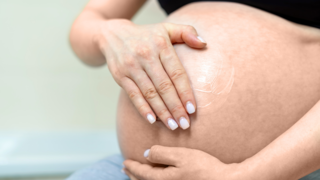In this article:
What Is Curb Walking to Induce Labour?
Curb walking is one of those simple tricks many pregnant people try when their due date has already passed. It’s about walking with one foot on a curb and the other on the street. This creates an uneven, lopsided movement that shifts your weight from side to side. Many parents explore this method as part of learning how to induce labour naturally.The idea is that this motion opens up your pelvis and encourages your baby’s head to move lower into the birth canal, putting gentle pressure on your cervix. This pressure might help with cervical dilation (opening) and effacement (thinning). Both are signs that your body might soon go into labour.
Does Curb Walking Really Help Induce Labour?
You might be wondering if curb walking is some sort of magic trick that can make labour start right away. But in reality, it’s not a guaranteed method, and there’s no solid scientific evidence to prove it directly induces labour. Still, there’s a reason why it’s become quite popular on platforms like social media, where some parents swear by it. The theory behind curb walking makes sense for those looking for ways to induce labour naturally:- The uneven walk makes your hips move side to side, which may help your baby shift into a better position for birth.
- As your baby’s head moves lower, it can put gentle pressure on your cervix, which might help it soften or dilate.
- This gentle pressure could be helpful if you’re already noticing early signs of labour, like mild contractions or slight cervical dilation.
Is It Safe to Do Curb Walking to Induce Labour?
For most people who have passed their due date, curb walking is considered a safe and gentle activity. It’s a light form of exercise, and walking itself is something doctors often recommend during pregnancy. Still, your safety matters most since your balance can be a bit off with a growing bump.These are a few simple things to keep in mind:
- It’s always better to have someone with you in case you feel unsteady, as your centre of gravity changes during pregnancy.
- Look for a quiet, even curb with no cracks or bumps. Stay away from busy roads or areas under construction.
- Avoid slippers or flip-flops. Go for comfortable walking shoes that give your feet and ankles proper support.
- If you feel tired, dizzy, or any kind of pain, stop right away and take a break.
- Talk to your healthcare professional before trying curb walking, especially if you have pregnancy complications like preeclampsia, placenta previa, or if your baby is breech.
There are times when curb walking might not be suitable. Avoid it if:
- You’re not yet full-term (before 39 weeks).
- You have conditions like vulvar varicosities (swollen veins in the pelvic area), pubic symphysis diastasis (separation of pelvic bones), or balance issues like vertigo.
- Your doctor has restricted physical activity or put you on pelvic rest.
When Should You Start Curb Walking to Induce Labour?
Experts suggest waiting until you’re at least 37 to 39 weeks pregnant, when your pregnancy is considered full-term. Remember, due dates are just estimates and can be off by a week or two. Starting too soon might not be safe, especially if your baby isn’t quite ready yet. Inducing labour before 37 weeks could increase the risk of complications, like low birth weight or other health concerns for your baby.How to Safely Practice Curb Walking to Induce Labour
For those curious about how to induce labour naturally, here’s a safe way to practice curb walking:- Walk with one foot on the curb and the other on the road for about 5 to 10 minutes in one direction. Then turn around and switch sides for another 5 to 10 minutes. This keeps your body balanced so one hip doesn’t get overworked.
- In total, aim for around 10 to 30 minutes of walking. Some people like to do it once a day, while others try it a few times a week.
- Stay alert while walking. Keep an eye out for traffic, cracks, or uneven spots on the road.
- If it’s too hot, too cold, or just not safe to go outside, you can try a similar motion indoors.
Whether you’re pregnant, a new mom, or navigating postpartum, you don’t have to do it alone. Join our support group to connect, share, and support one another.
FAQs on How Safe and Effective Is Curb Walking to Induce Labour?
- What are some low-impact exercises that can help induce labour?
Gentle exercises like walking, pelvic tilts, prenatal yoga, and squats can help the baby move into the optimal position. - Should I walk on a high curb or a low one to induce labour?
A low, stable curb is safer for walking during pregnancy. It allows controlled steps and reduces the risk of losing balance or falling.











